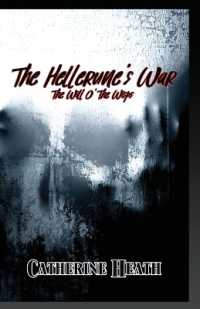- ホーム
- > 洋書
- > 英文書
- > Transportation
Full Description
Cultural tourism remains the only book to bridge the gap between cultural tourism and arts/heritage management. Previous editions explored how heritage and tourism goals can be integrated in a management and marketing framework to produce sustainable cultural tourism. The current edition takes this further to examine cultural tourism as it encounters the shocks and disruptions of the twenty-first century. An umbrella approach to cultural tourism represents a unique feature of the book, proposing solutions to achieve an optimal outcome for all sectors. In doing so, it provides a blueprint for producing top quality, long-term cultural tourism products and experiences.
This new edition has been completely revised and updated to reflect the important developments in the field with new sections on:
Increasingly relevant topics including climate change, the threat of de-globalization, under- and over tourism and national mythmaking.
Experience creation, strategic visitor management, resilience building and Indigenous rights-based tourism development.
Ethical and satisfactory cultural tourism experience in an age of rapidly developing technology.
Written by experts in both tourism and cultural heritage management, this book will enable professionals and students to gain a better understanding of their own and each other's roles in achieving exceptional cultural tourism practices.
Contents
Part A Setting the context
1.Introduction: Defining cultural tourism
2.Challenges in building resilient cultural tourism
3.Issues, benefits, risks and costs
4.The politics of cultural tourism: Power, Identity, and the shaping of cultural tourism
Part B Cultural assets
5.Cultural heritage management principles and practice
6.Tangible cultural heritage
7.World Heritage
8.Intangible cultural heritage
9.Contemporary culture and the advent of creative tourism
Part C Tourism, the tourist and stakeholders
10.How tourism works
11.The cultural tourism market: A cultural tourism typology
12.Why do cultural tourists travel?
13.Tourism attraction systems, markers and gatekeepers
14.How cultural tourists consume a destination
15.Deterioration, shocks, and crises in cultural tourism
Part D Products and experiences
16.Cultural tourism products and experiences
17.Assessing potential
18.Useful auditing tools: Market Appeal / Robusticity Matrix and Sustainable Creative Advantage Assessment
Part E Operationalization
19.Framework for successful experiences
20.Applying planning and management frameworks
21.Interpretation and experience creation
22.Digital cultures and heritage
Epilogue







